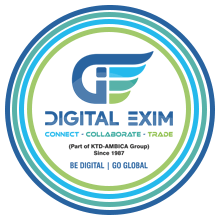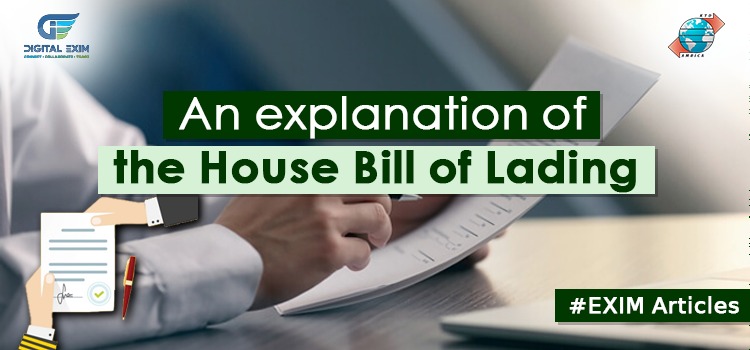An Ocean Transport Intermediary (OTI) such as a freight forwarder or a non-vessel operating company (NVOCC) produces a House Bill of Lading, which the supplier receives upon receiving the cargo. Import-export course online will help you in understanding the shipping & logistic terms easily. In most cases, a freight forwarder, as a vessel carrier, issues a receipt for the goods that is called House Bill of Ladings (HBL). As a result, the freight forwarder books the cargo with the vessel owner and collects the Master Bill of Lading (MBL) or Groupage Bill of Lading.
House Bill of Lading Includes-
- Address and name of the supplier (exporter/seller)
- Name and address of receiver (importer/consignee)
- A description of the items shipped (dimensions, weight, classification, container type, etc.).
- Valuation of the items shipped
- Transportation mode
- Shipment terms
In essence, it is an assurance that the consignment is damage-free and is ready for shipping to the consignee. Any damage incurred during transportation becomes the carrier’s responsibility. If the House Bill of Lading indicates that the consignment was damaged when it was received, the supplier is liable. Additionally, the house bill of lading is proof that the carrier has a contract to transport the cargo. Hope you like our article on house bill of lading. Do share your experience on the same. The information provided above is part of our Online Export Import Training course.
For More Knowledge Read Our Article On-
A Comparison of BAF and CAF Do Airway Bills Serve As Documents Of Title? Difference Between High Sea Sale and ImportsWhat does a Line Number in IGM mean? What is IHC- Inland Haulage Charges? FIRC In Export And Import Business Documentation of High Sea Sales What is Triangular Shipment?What Is E-Commerce Under GST? What Is the Port Of Discharge And Place Of DeliveryDifferent Types of Export Containers What is FCL in Export Import? Steps to Become Successful in Trade for Start-ups What is a Mother Vessel and Feeder Vessel What is co-loading? What is ICD?
What is SWOT Analysis and Why it is Important for Business?
Role of Indian Embassy in Export ImportWhat is Registration Cum Membership Certificate? What is DGFT and Its Role? What is a Bill of Exchange? What is a Letter of Credit?
What is High Sea Sales? What Does DGFT Grant to Indian Importers & Exporters?
Watch Our YouTube Videos On-
https://www.youtube.com/watch?v=rrHdoF4RJjA&t=2shttps://www.youtube.com/watch?v=kO2ekPQke8whttps://www.youtube.com/watch?v=y4bXUAtMY8A&t=12shttps://www.youtube.com/watch?v=7pMI3vlKEDchttps://www.youtube.com/watch?v=r_4zjeW2Ht8&t=1shttps://www.youtube.com/watch?v=dptTB7HCJtA&t=4shttps://www.youtube.com/watch?v=5aTvyKIc7ks&t=1s







